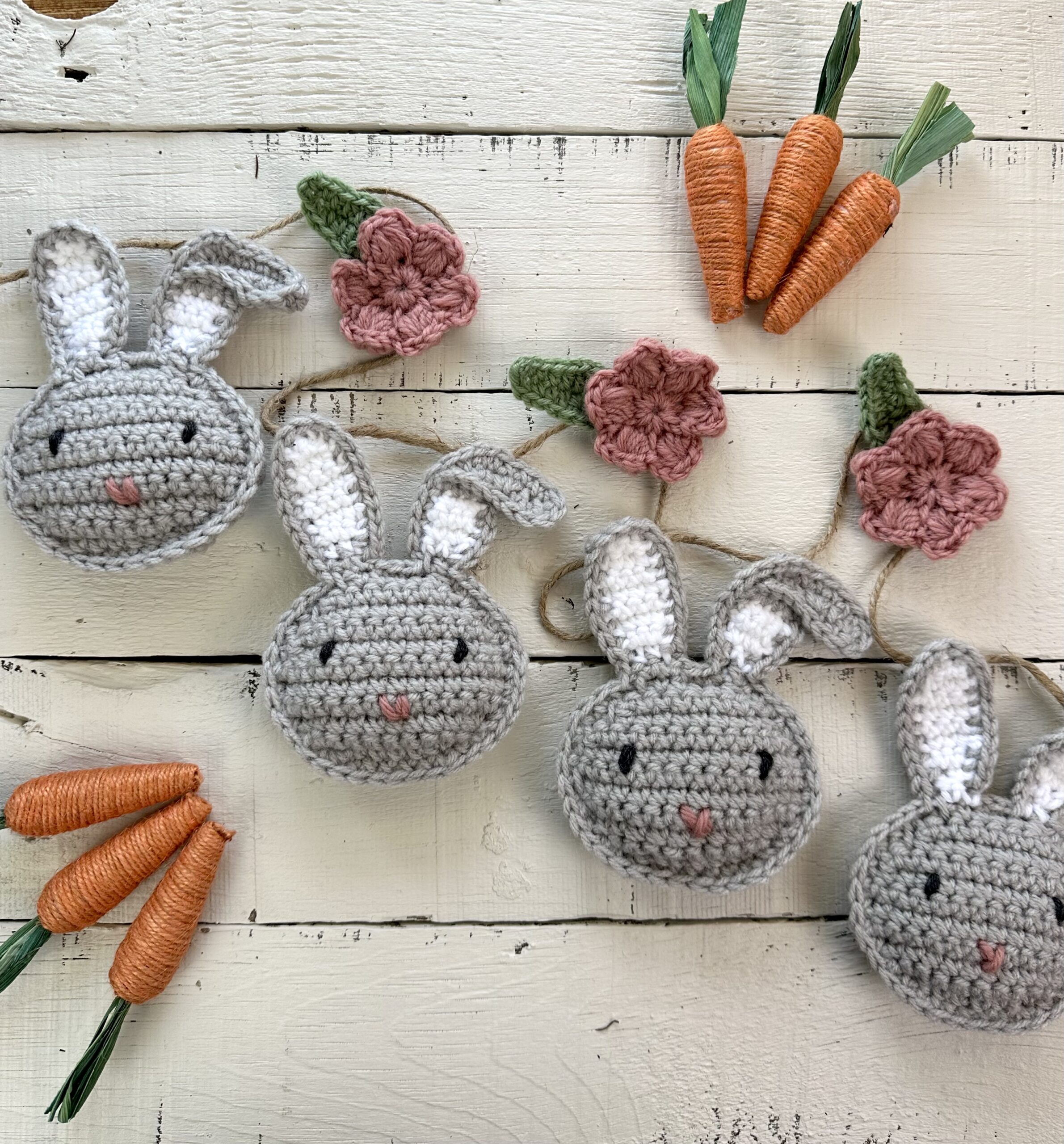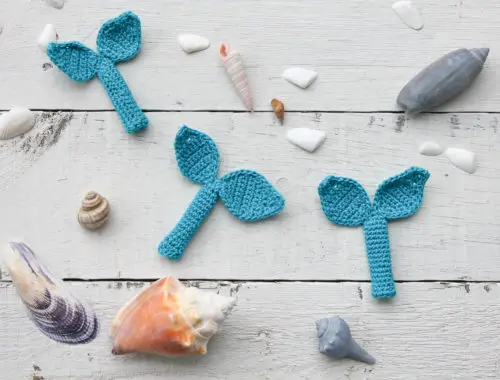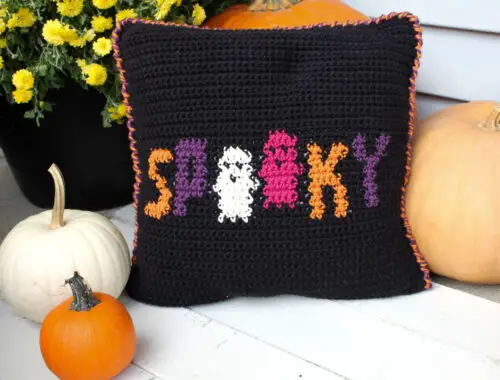
Crochet Fox Pillow- Free Pattern
Whether you are decorating a woodland nursery for your new bundle of joy or looking for a meaningful gift for a baby shower, this crochet fox pillow is the sweetest handmade addition! This pattern is easy to follow and is perfect for beginners and experienced crocheters alike. Scroll down (or click here) for the free pattern or click to purchase an ad-free printable version from my Etsy or Ravelry shops.
Don’t have time to make it now? Pin this pattern for later!
This pattern may contain affiliate links, which means I may receive a small commission, at no extra cost to you, when you make a purchase. Please read my affiliate disclosure for more details.
Why a Crochet Fox Pillow?
Ok, I know everyone hates reading a memoir before you get to the real reason you’re here – the free pattern! – so feel free to scroll on down to get to that, but if you’re willing to indulge me for a minute, I’ll tell you why this fox pillow pattern hold a special place in my heart.

I originally made this pillow when I was expecting my fourth kiddo. My pregnancy with him was a huge surprise after we had endured years of fertility treatments to get our older three – our only girl and a set of twin boys. We also lost 3 babies along the way and finding out we were expecting a 4th naturally, years after we thought we were done, was exciting, but scary. My husband and I were both a little nervous (4 kids! Yikes!), but after we got used to the idea, we felt honored and blessed to take on this new adventure. So “Our Next Adventure” became the theme of his nursery (that we had to scramble to build because we were out of bedrooms in our house!).
The first thing I crocheted for his nursery was The Adventure Wall Hanging (which does not have a free version, but you can purchase the ad-free printer friendly version in my Etsy shop here for a small fee). I loved the wall hanging (still do!), but I still wanted to add a few more handmade touches to his nursery.
In my mind, the Adventure theme meant sort of a woodland vibe, and our accent color was going to be orange, so I decided a crochet fox pillow would be perfect! Plus it would give me something to support my back with during those long hours sitting in the nursing chair! My sweet baby is now 6 (six!!!!) and his nursery days are behind him, but he still sleeps with his original fox pillow in his bed every night. Here’s a peek at his nursery from all those years ago (with a few others that I found while looking through old pictures 😭 )!



More Free Crochet Pillow Patterns
If you find crochet pillows as fun to make as I do, check out these other free patterns here on the blog – The Grain Sack Pillow and The Bobble Pumpkin Pillow (fun fact: this one has won multiple state fair blue ribbons!)


Fox Pillow – Materials and Construction
The materials for this crocheted fox pillow are pretty basic. You will need about 350 yards of orange worsted weight yarn for the main color and about 150 yards of white worsted weight for the face. I used Lion Brand Pound of Love in the colors Pumpkin Spice and White (one skein of each is more than enough to make a pillow – you should actually be able to make 2 pillows with one skein of each).
You will also need a small amount (about 10 yards) of black or dark gray yarn for the details. I used Caron Simply Soft in Charcoal. You can stuff the pillow with a 16″ x 16″ pillow insert or any stuffing you like. You will also need a size G hook, a yarn needle, stitch markers, and scissors.

The construction of this fox pillow is also fairly simple. It is made of two flat panels, crocheted in rows of half double crochet. The snout is attached by crocheting onto unworked loops in the middle of the front panel. The ears, eyes, and nose details are crocheted separately and sewn on. The two flat panels are then joined together with single crochet and the whole thing is stuffed with a pillow insert. Easy and fun to make!
The Fox Pillow crochet pattern mainly uses hdc, and sc, with some increasing and decreasing (detailed instructions included in the pattern) so it’s totally doable for beginners!

Uses for Your Fox Pillow
Of course this crochet fox pillow is perfect for your Adventure or Woodland theme nursery, but it would also make an adorable and thoughtful handmade baby shower gift. Or maybe you have a fox-loving kiddo in your life who would be thrilled to get a fun fox pillow for his or her room? Either way, I hope you enjoy this pillow!
On to the free pattern!

Purchase an ad-free Printer friendly version of this pattern in my Etsy shop or Ravelry shop.
Crochet Fox Pillow Free Pattern
Skill Level
Easy – Level 2: this pattern is mainly worked in half double crochet, with some increasing and decreasing. Single crochet is used to join the pillow panels and some sewing is required to add the details.
Materials
- Yarn:
- About 350 yards of worsted weight (size 4) yarn for the main color (orange). I used Lion Brand Pound of Love in “Pumpkin Spice” (100% acrylic, 16oz/454g, 1020yds/932m).
- About 150 yards of worsted weight (4) yarn for the face (white). I used Lion Brand Pound of Love in “White” (100% acrylic, 16oz/454g, 1020yds/932m).
- About 10 yards of worsted weight (4) yarn for the eyes, nose, and ear details (black or dark gray). I used Caron Simply Soft in “Charcoal” (100% acrylic, 5oz/142g, 250yds/228m).
- Hook: size G/6 (4.00mm)
- 16″ x 16″ Pillow insert
- Stitch marker
- Yarn needle, scissors
Dimensions
The finished pillow is 16″x16″.
Gauge
14 sts x 11 rows in 4″ square using hdc.
Notes
- This pillow cover is made of two flat panels, worked in hdc in rows. The snout is added to the front panel by crocheting onto unworked loops left in the middle of the panel, then sewing the loose part of the snout down. The eyes and nose are crocheted separately and sewn on to the front panel before joining the panels. The front and back panels are then joined using a single crochet border. The ears are crocheted separately and added (sewn on) last.
- Working in the Back Bump – Make your initial chain as instructed. You will see the two loops of each chain in a V-shape. Turn the chain over and on the back of each “V” you should see another loop or “bump.” This is what you will work your Row 1 stitches into. This is optional, but makes a cleaner looking starting edge. See this blog post for more info on this technique.
- For all color changes: when working the last stitch of the “old” color, stop before the last pull through of the stitch (for sc there will be two loops left on the hook; for hdc there will be three loops), pull through with the “new” color and continue with the pattern.
- Since the “wrong side” of the panels will be on the inside of the pillow, you do not need to cut/weave in the yarn when changing color. I just dropped the yarn when not in use and crossed it over the back of the panel to pick up the next time I needed it.
- The ch 1 at the beginning of each row does not count as a stitch.
- Pattern is written in US crochet terms.
Notes About Half Double Crochet
- The hdc stitch has 3 possible loops to work into. It has the usual “V” on top formed by the front loop and the back loop, but it also has a “3rd loop” (the loop nearest you, running parallel to the “front loop”). NOTE: The loops are always determined by their position relative to you. So even after you turn your work, the 3rd loop will still be the bar/loop parallel to the V, and the front loop will be the part of the V that is nearest you, the back loop will be the part of the V farthest from you.
- For this pattern, we will alternate which loops we work into depending on if you are looking at the right side or wrong side. This avoids the extra line that forms on your work if the 3rd loop is unused. You can read more about this technique in this blog post.
- In general, if you are looking at the “wrong side” (WS) of your work, you should work into the front and back loops, if you are looking at the “right side” (RS) you should work into the 3rd loop and front loop. When possible, the rows will be labeled RS or WS.

Special Stitches
- Half double crochet decrease (hdc-dec) – Yo and insert hook into the first stitch, yarn over and pull up a loop, yo and insert hook into next stitch, yarn over and pull up a loop (5 loops on hook), yarn over and pull through all 5 loops on the hook.
- Half double crochet increase (hdc-inc) – Work 2 hdcs in one stitch.
- Single crochet decrease (sc-dec) – Insert hook into first stitch, yo and pull up a loop, insert hook into next stitch, yo and pull up a loop (3 loops on hook), yo and pull through all 3 loops.
- Single crochet increase (sc-inc) – Work 2 scs in one stitch.
Abbreviations
- ch = chain
- hdc = half double crochet
- hdc-dec = half double crochet decrease
- hdc-inc = half double crochet increase
- rep = repeat
- RS = right side
- sc = single crochet
- sc-dec = single crochet decrease
- sc-inc = single crochet increase
- sl st = slip stitch
- St(s) = stitch(es)
- WS = wrong side
- yo = yarn over
Crochet Fox Pillow Pattern
Front Pillow Panel (make 1)
Using white, chain 59. Tip: Keep your chains tight or go down a hook size just for the chain to prevent the bottom of the panel from flaring. Switch back to the G hook for Row 1.
Row 1 (RS): (Working in the back bump of the chain) Hdc in 2nd chain from hook and in each chain across. Before turning, place a stitch marker on the side facing you. This will mark the “right side” of the panel. Ch 1, turn. (58 hdc)

NOTE: For all parts of this pattern using hdc, you will work your stitches in the 3rd and front loop when you are working on the “right side” and in the front and back loop when working on the “wrong side”. Please see the “NOTES ABOUT HALF DOUBLE CROCHET” section for more info. I will include specific instructions for this in the first few rows of each section to remind you and each row will be labeled RS or WS.

Row 2 (WS): Working in the front loop and back loop (ignore 3rd loop), hdc in each stitch. Ch 1, turn. (58 hdc)
Tip: It can be tricky to keep straight edges with hdc. Be sure to work your first hdc of the row into the very first stitch you come to and be careful to not skip the last stitch of the row. I like to count my stitches every few rows to make sure I keep the correct stitch count.

Row 3 (RS): Working in the 3rd and front loop (ignore back loop), hdc in each st. Ch 1, turn. (58 hdc)
Continue working your stitches in the 3rd and front loop when you are working on the “right side” and in the front and back loop when working on the “wrong side” for the rest of the panel.
Rows 4 (WS) – 27 (RS): Repeat Rows 2 & 3. On the last hdc of Row 27, stop with 3 loops on the hook and pull through with orange yarn. Drop white yarn to the wrong side of the panel. You do not need to fasten off the white, just leave it attached and pick it back up when you need it again. Ch 1, turn.
Row 28 (WS): Using orange, hdc in the first 8 sts (switch to white on the last pull through of the 8th hdc), using white, hdc in the next 42 sts (switch to orange), using orange, hdc in the last 8 sts. Ch 1, turn. (58 hdc)

Row 29 (RS): Using orange, hdc in the first 10 sts (switch to white), using white, hdc in the next 38 sts (switch to orange), using orange, hdc in the last 10 sts. Ch 1, turn. (58 hdc)
Fasten off white yarn.

You will be using orange yarn for the rest of the panel.
Row 30 (WS): Hdc in each st. Ch 1, turn. (58 hdc)
Row 31 (RS): In this row, we will leave some loops unworked on the right side for a portion of the stitches. This will give us a place to attach the snout later. Working in the 3rd and front loop, hdc in the first 17 sts, working in the front and back loop (leaving the 3rd loop unworked on the right side), hdc in the next 24 sts, working in the 3rd and front loop, hdc in the last 17 sts. Ch 1, turn. (58 hdc)

Rows 32 (WS) – 45 (RS): Hdc in each st. Ch 1, turn. (58 hdc)
Fasten off after Row 45. Weave in ends.
Snout
Using orange yarn,
- Rotate the front pillow panel so that the orange part is closest to you.
- Find the 24 sts with the unworked loops in Row 31.
- Insert empty hook under the 1st unworked loop on the right.
- Lay the orange working yarn over your hook and pull back through the unworked loop. Attach with a sl st.

Row 1 (RS): Work a hdc in the 1st unworked loop (the same one you just slip stitched to), and in each unworked loop across. Before turning, place a stitch marker on the stitches you just made. This will mark the “right side” of the snout. For the rest of the snout, continue working your stitches in the 3rd and front loop when you are working on the “right side” and in the front and back loop when working on the “wrong side”. Ch 1, turn. (24 hdc)
Row 2 (WS) 1 hdc in each st. Ch 1, turn. (24 hdc)
Row 3 (RS): Hdc-dec over the first 2 sts, 1 hdc in each st until the last 2 sts, hdc-dec over the last 2 sts. Ch 1, turn. (22 hdc)
Tip: The hdc-dec stitches don’t have a 3rd loop. Just work into the V (front and back loops) when working into these stitches.
Row 4 (WS): Hdc-dec over the first 2 sts, 1 hdc in each st until the last 2 sts, hdc-dec over the last 2 sts. Ch 1, turn. (20 hdc)
Row 5 (RS): 1 hdc in each st. Ch 1, turn. (20 hdc)
Row 6 (WS): Hdc-dec over the first 2 sts, 1 hdc in each st until the last 2 sts, hdc-dec over the last 2 sts. Ch 1, turn. (18 hdc)
Row 7 (RS): Hdc-dec over the first 2 sts, 1 hdc in each st until the last 2 sts, hdc-dec over the last 2 sts. Ch 1, turn. (16 hdc)
Row 8 (WS): 1 hdc in each st. Ch 1, turn. (16 hdc)
Row 9 (RS): Hdc-dec over the first 2 sts, 1 hdc in each st until the last 2 sts, hdc-dec over the last 2 sts. Ch 1, turn. (14 hdc)
Row 10 (WS): Hdc-dec over the first 2 sts, 1 hdc in each st until the last 2 sts, hdc-dec over the last 2 sts. Ch 1, turn. (12 hdc)
Row 11 (RS): 1 hdc in each st. Ch 1, turn. (12 hdc)
Row 12 (WS): Hdc-dec over the first 2 sts, 1 hdc in each st until the last 2 sts, hdc-dec over the last 2 sts. Ch 1, turn. (10 hdc)
Row 13 (RS): Hdc-dec over the first 2 sts, 1 hdc in each st until the last 2 sts, hdc-dec over the last 2 sts. Ch 1, turn. (8 hdc)
Row 14 (WS): 1 hdc in each st. Ch 1, turn. (8 hdc)
Row 15 (RS): Hdc-dec over the first 2 sts, 1 hdc in each st until the last 2 sts, hdc-dec over the last 2 sts. Ch 1, turn. (6 hdc)
Row 16 (WS): Hdc-dec over the first 2 sts, 1 hdc in each st until the last 2 sts, hdc-dec over the last 2 sts. Ch 1, turn. (4 hdc)
Row 17 (RS): 1 hdc in each st. Ch 1, turn. (4 hdc)
Fasten off and weave in ends.

We will now sc around the perimeter of the snout flap to give it a nice edge.
To do that,
- Rotate your work so that you will be working down the sides of the rows you just made.
- Insert your hook at the corner where you made your first hdc of Row 1 of the snout.
- Attach orange yarn with a sl st.
- Work scs evenly down the first side of the snout flap.
- Work a sc in each of the 4 sts at the bottom point.
- Rotate and continue sc-ing back up the other side.
- Fasten off and tuck tails to wrong side.

Securing Snout to Front Panel
We will now sew the loose part of the orange snout flap down to the white section of the front pillow panel so that the snout lays flat. Optional: Use a few pins or yarn needles to hold the snout in place as you sew.
Thread a yarn needle with a long length of orange yarn.
Starting at one of the top corners of the snout (where it is attached to the loops of Row 31), insert your needle from the back (wrong side) of the pillow panel, through the panel and through the snout.
Pull the needle through toward the front and then continue sewing back and forth about 1/4 inch from the edge of the snout all the way around until you get to the other corner where the snout attaches. Tip – sew a few extra stitches at the very bottom point of the snout to prevent it from curling up when we stuff the pillow.
Back Pillow Panel (make 1)
Using orange, chain 59. Tip: Keep your chains tight or go down a hook size just for the chain to prevent the bottom of the panel from flaring. Switch back to the G hook for Row 1.
Row 1 (RS): (Working in the back bump of the chain) Hdc in 2nd chain from hook and in each chain across. Before turning, place a stitch marker on the side facing you. This will mark the “right side” of the panel. Ch 1, turn. (58 hdc)
Row 2 (WS): Working in the front loop and back loop (ignore 3rd loop), hdc in each stitch. Ch 1, turn. (58 hdc)
Row 3 (RS): Working in the 3rd and front loop (ignore back loop), hdc in each st. Ch 1, turn. (58 hdc)
Continue working your stitches in the 3rd and front loop when you are working on the “right side” and in the front and back loop when working on the “wrong side”.
Rows 4 (WS) – 45 (RS): Repeat Rows 2 & 3.
Fasten off, weave in ends.
Ears (make 2)
Ear Triangle (make 1 orange and 1 white for each ear)
Ch 2.
Row 1 (RS): (Working in the back bump of the chain) Hdc-inc in 2nd chain from hook. Before turning, place a stitch marker on the side facing you. This will mark the “right side” of the triangle. Ch 1, turn. (2 hdc)
Row 2 (WS): Working in the front loop and back loop, hdc-inc in the 1st st, 1 hdc in last st. Ch 1, turn. (3 hdc)
Row 3 (RS): Working in the 3rd and front loop, hdc-inc in the 1st st, 1 hdc in each of the next 2 sts. Ch 1, turn. (4 hdc)
Continue working your stitches in the 3rd and front loop when you are working on the “right side” and in the front and back loop when working on the “wrong side”.
Row 4 (WS): Hdc-inc in 1st st, 1 hdc in each of the next 3 sts. Ch 1, turn. (5 hdc)
Row 5 (RS): Hdc-inc in 1st st, 1 hdc in each of the next 4 sts. Ch 1, turn. (6 hdc)
Row 6 (WS): Hdc-inc in 1st st, 1 hdc in each of the next 5 sts. Ch 1, turn. (7 hdc)
Row 7 (RS): Hdc-inc in 1st st, 1 hdc in each of the next 6 sts. Ch 1, turn. (8 hdc)
Row 8 (WS): Hdc-inc in 1st st, 1 hdc in each of the next 7 sts. Ch 1, turn. (9 hdc)
Row 9 (RS): Hdc-inc in 1st st, 1 hdc in each of the next 8 sts. Ch 1, turn. (10 hdc)
Fasten off, weave in ends.

Joining Ear Triangles
- Lay white triangle on top of orange triangle with wrong sides facing in.
- With white triangle facing you, attach orange yarn by slip stitching through both layers near the edge about 4 rows down from the top point.
- Start joining the two triangles by single crocheting down the first side through both layers along the edges of the rows. Try to space your scs as evenly as you can.
- Continue sc-ing around the perimeter of the ear to join the layers, working 2 scs in one space at each corner.

- Stop when you are about 4 rows from the top on the other side of the triangle. Switch to charcoal yarn by stopping your last sc with 2 orange loops on the hook and pulling through with charcoal. Fasten off orange yarn. (I tied the orange and charcoal tails together and tucked them in between the 2 triangles).
- Using charcoal yarn, continue sc-ing through both layers to finish joining the triangles (don’t forget to work 2 scs in one space at the top point).
- Sl st to the first orange sc to join the round.
- Fasten off and weave in ends.
- Repeat for 2nd ear.

Eyes
Right Eye
Using charcoal yarn and G hook, ch 13.
Row 1: Sc in 2nd ch from hook, 1 sc in next ch, 3 sc in the next ch, 1 sc in each of the next 2 chs, sc-dec over next 2 chs, 1 sc in each of the last 4 chs. (12 sts)
Fasten off leaving a long tail for sewing. Weave in starting tail.
Left Eye
Using charcoal yarn and G hook, ch 13.
Row 1: Sc in 2nd ch from hook, 1 sc in next 3 chs, sc-dec over next 2 chs, 1 sc in each of the next 2 chs, 3 sc in the next ch, 1 sc in each of the last 2 chs. (12 sts)
Fasten off leaving a long tail for sewing. Weave in starting tail.

Nose (make 1)
Using charcoal yarn and G hook, ch 2.
Row 1: Sc-inc in 2nd ch from hook. Ch 1, turn. (2 sc)
Row 2: Sc-inc in 1st st, 1 sc in last st. Ch 1, turn. (3 sc)
Row 3: Sc-inc in 1st st, 1 sc in each of the last 2 sts. Ch 1. (4 sc)
We will now sc around the perimeter to give it a nice edge.
To do that,
- Rotate your work so that you are working down the sides of the rows.
- Work a few scs evenly down the first side.
- Work 2 scs in one space at the bottom point.
- Rotate and continue sc-ing back up the other side.
- Work 2 scs at the corner, sc in each st across the top, and 2 scs at the next corner.
- Sl st to the first sc to join the round.
- Fasten off, leaving a long tail for sewing. Weave in starting tail.

Adding Details to Front Pillow Panel
We will now sew the nose and two eyes to the front pillow panel.

Attaching the Nose
- Position the nose at the bottom of the snout on the front pillow panel so that the last 4 edge scs of the nose line up with the 4 sts at the bottom of the snout. Optional – use a pin or yarn needle to pin the nose in place as you sew.
- Tip – Butt the nose tightly up against the bottom point of the snout. The panel will stretch a bit when we stuff the pillow and you don’t want any white space to show between the nose and the snout.
- Thread the long tail of the nose onto a yarn needle.
- Use the needle to sew back and forth through the nose and the panel to attach all the way around the perimeter of the nose.
- Fasten off, tuck the end to the wrong side of the panel.
Attaching the Eyes
- Position the eyes on either side of the snout right around Row 24, starting about 1.5 inches out from the snout. The “eye lash” end should be toward the outside of the panel and the rest of the eye should slightly arch up in the middle.
- Optional – pin in place with a pin or yarn needle.
- Thread the long tail of the first eye onto a yarn needle.
- Use the needle to sew back and forth through the eye and the panel to attach the eye securely from one side to the other.
- Fasten off, tuck the end to the wrong side of the panel.
- Repeat for the other eye.

Joining the Front and Back Pillow Panels
- Align the front and back panels with the “wrong sides” facing in. Try to line up the stitches and row ends as much as possible.
- With the front panel facing you, attach orange yarn at one corner using a slip stitch through both panels. Ch 1.
- Sc through both panels evenly around to join the two panels. For me this worked out to be placing a sc in every stitch on the top and bottom, and at about every row on the sides.
- Work 2 sc in one space at each corner.
- Stop after you have stitched together three sides and stuff with a pillow insert or other stuffing.
- Continue sc-ing across the last side until you reach where you started. Sl st to your first sc to join. Fasten off and weave in ends.

Attaching Ears
- We will attach the ears to the fox pillow by sewing them to the single crochet boarder we made to join the panels. This helps the ears stand upright (as opposed to attaching them directly to the front panel where they tend to flop over).
- Determine where you would like the ears to be placed (Optional – pin them in place with a pin or yarn needle while you sew).
- Thread a yarn needle with a length of orange yarn.
- Insert your needle from the back through the sc edging and through the bottom edge of the ear. Tip: Make your first stitch about 1/2 inch up the side of the ear. This helps the ear stand upright.
- Continue sewing across through the sc edging and the bottom of the ear until the ear is securely attached. Make your last stitch about 1/2 inch up the other side of the ear.
- Fasten off and weave in ends.
- Repeat for the other ear.
- Your Fox Pillow is done!

I hope you enjoyed the crochet Woodland Fox Pillow pattern! Tag me on Instagram @theknottednest to share your project. You can find more project ideas and patterns in the Patterns Section here on the blog.
Happy making!










